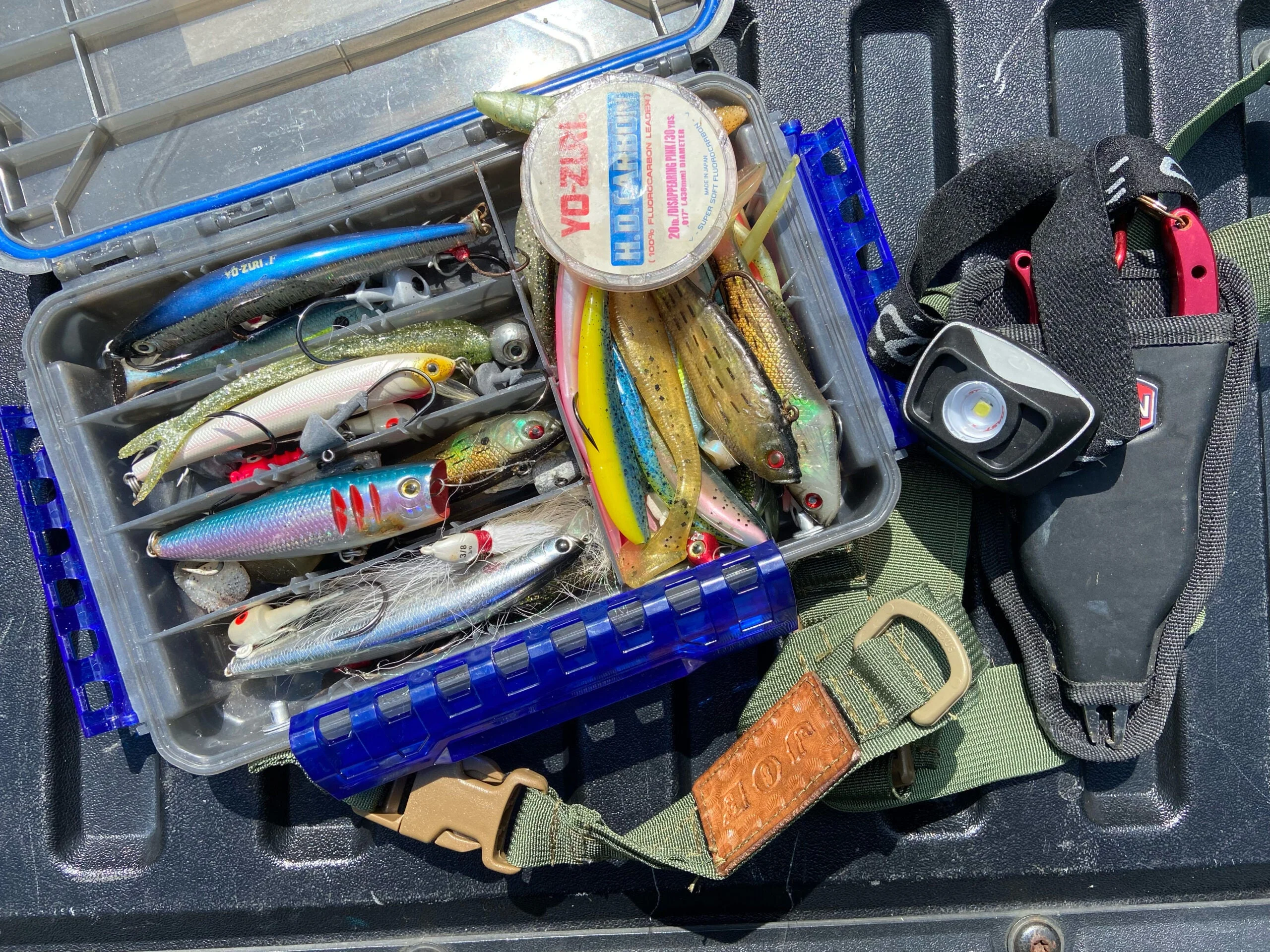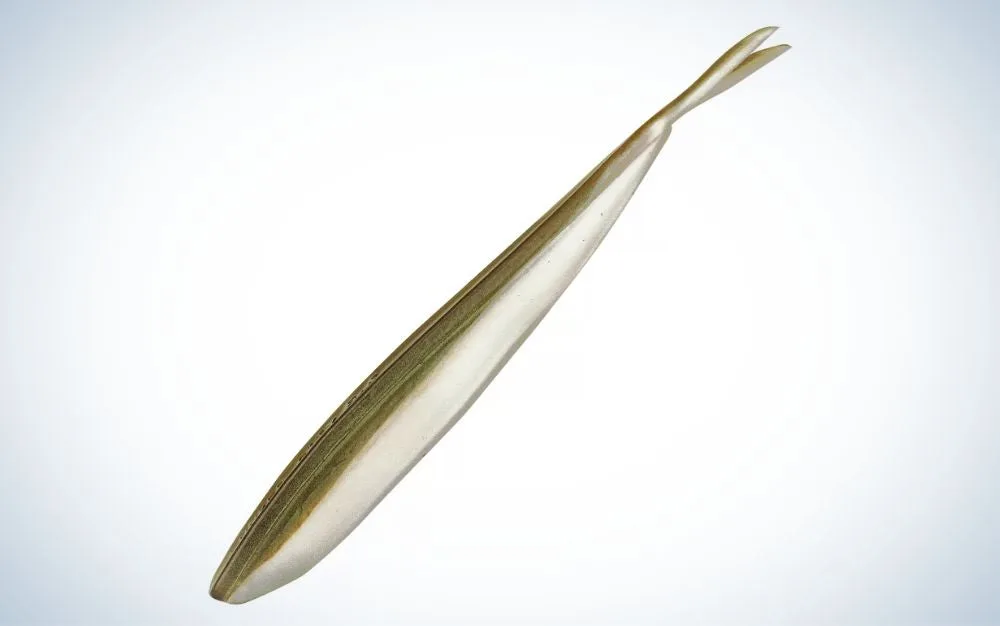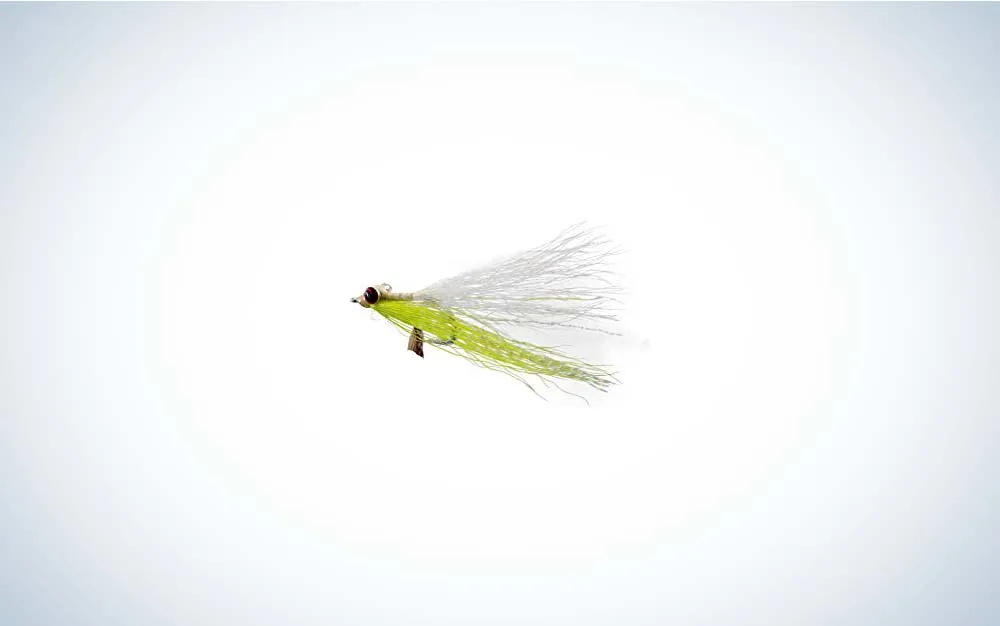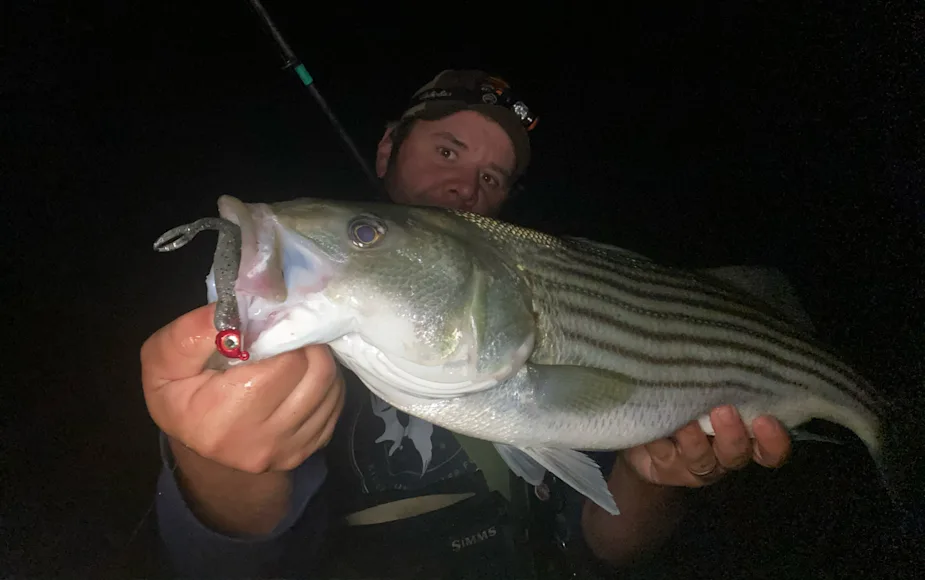I’m paraphrasing here, but I get this a lot via DM and email: _Hey Joe, I’m headed to the beach with the family this summer and I want to catch striped bass
. Where should I go and what should I bring?_ I’m always happy to help, though admittedly I wince a little every time this pops up in my inbox. It seems like a simple question, but it’s a fairly complex answer, mostly because there are two kinds of striped bass—migrators and residents.
Coastal striped bass range from the Carolinas to Maine. If you’re renting that villa north of Rhode Island in July or August, lucky you, because you’re posting up where the bulk of the large, oceanic, migrating stripers happen to be during those months. Most often, though, this question comes from folks headed to the beach in Virginia, Delaware, New Jersey, or New York, and I have to regretfully inform them that to catch big stripers in these locations, you need to be there in spring, long before the Ferris wheel is open for the season, or in the fall, long after the go-kart track goes quiet for winter. But there is good news.

In the intense summer heat, try to keep bass in the water and aim for a quick release. Joe Cermele
Every piece of coastline the migratory run of big bass touches also has resident stripers
. These fish are smaller, but they stick around in the bays all summer long. Ironically, these littler players can be more challenging to find and fool than the heavy spring and fall runners, but they are a blast on light spin and fly tackle. If you’re one of those people looking to sneak in some striper action between building sandcastles and going to the arcade, I’ve got you covered with the complete plan for summer vacation
bass.
When to Fish for Striped Bass in Summer
The most critical element to Dog-Days success with resident striped bass is not knowing what to cast, but when to cast it. Location is certainly important, and I’ll be breaking down the best spots shortly, but timing comes first.
Many people looking for summer-vacation bass assume fishing for them is a daytime activity, and that maybe even the kids can tag along. Thing is, resident striper fishing tends to be more technical. You’re not usually casting out a piece of bait and waiting. For older kids proficient in casting and working lures, it’s perfect, but in most scenarios, little tykes probably won’t be able to hang. That’s partially because much of the best action is going to happen while they’re deep asleep in the beach-house bunkbeds.
The best time to fish for summer striped bass is at night and from sunup into the first couple hours of light, especially if the tide is going out. Evening can be very good, but during the summer, it’s common for inland waterways to stay buzzing with booze-cruise boat traffic right up until dark. Commotion and engine noise on the water are two of the biggest reasons stripers lay low during the day. Factor in the bright summer sun and that water temperatures are at their warmest midday, and it’s not exactly a recipe for success when dealing with a fish that spooks easily and is most comfortable in cool water and low light.
When I share this information with vacationers, it’s often met with disappointment. But I remind them that playing late and early actually buys you more fishing time. Granted, you might have to pass on crushing White Claws on the porch one night, and you might be a little more tired during mini golf because you got up so early, but a proper summer bass hunt doesn’t detract from family time. Not to mention, there is nothing cooler than wading the bay at first light when there’s no one around. The water is like a sheet of glass, and you can hear stripers sucking grass shrimp and minnows off the surface from a mile away. Feeding windows even at peak hours tend to be fleeting, so let’s look at some of the key areas where you’re likely to find that window wide open.
The Best Fishing Spots for Summer Stripers
1. Inlets
Stripers are temperature-sensitive fish. Their preferred range is 55 to 65 degrees. In the mid-summer, however, back bays generally get hot and exceed these temperatures, making the fish sluggish for most of the day. As the tides move, inlets exchange cooler ocean water with warmer bay water. This is one reason why during the heat of summer, resident stripers tend to spend much of their time in and around inlets. The stronger inlet tidal flow also pulls in more food sources like crabs and baitfish.
2. Bridges
Whether a bridge is located over a narrow back bay channel or spanning a wide inlet, it creates two key elements essential to striper feeding: ambush cover and increased tidal flow. Bridge piles provide a current break during both the incoming and outgoing tide. Stripers can hold comfortably in the soft spot behind the piles. Simultaneously, the piles create a choke point or funnel in the tidal flow, which catches weaker baitfish, crabs, and shrimp and sucks them right past the piles where the stripers are waiting to attack.
3. Deep-Cut Sod Banks
Vast networks of sod banks are present in bays from the Carolinas to New York. For the most part, these banks are hard-packed, making it possible to walk their edges for miles. The magic of sod banks is that they erode easily in the water, allowing tidal flow to scoop out their submerged walls over time. The undercut sod banks create perfect refuge for resident stripers. During low-light hours, deep channels flanked by sod banks can really come alive. But even during the middle of the day, with boat traffic raging, working a popper or swimbait tight and parallel to the bank can draw out some laid up bass.
4. Well-Lit Areas
Although it’s one of the more difficult areas to find—at least without trespassing—any back-bay location where lights illuminate the water is the jackpot. Regardless of whether it’s the glow from a streetlight on a bulkhead, a dock light behind someone’s house, or lights spanning a bridge—these sources of light attract shrimp, crabs, and baitfish. The key is consistency: You can’t bring your own light and expect results; it must be a light that shines night after night, and the brighter it shines, the better the fishing. Light creates hard shadow lines, and stripers use this contrast to hunt. They’ll hold in the pitch-dark water just outside the light’s reach, swooping into the glow to grab a bite, or waiting for a peanut bunker to goof up and cross into the dark water. Always cast into the darkness and bring your lure or fly across the shadow line into the light.
5. Inlet-Adjacent Jetties
Throughout most of the striper range, the ocean front beaches aren’t the primary areas to target by mid-summer. During the spring and fall when the larger migratory fish are moving up and down the coast, ocean beaches are choice, but the bulk of smaller summer resident bass will spend their time in the bay. That does not mean, however, that they won’t move into the ocean at times to feed. Generally, when they do, they’ll stay close to the inlet and post up on a specific piece of structure. Very often, this is the end of the jetties that flank an inlet or any oceanfront jetties relatively close. They may only hang out here for a certain part of the tide, but if you catch the feeding window in these locations, the fish are often ravenous.
6. Docks
Similar to bridges, docks—whether fixed or floating—provide current breaks, shade, and ambush structure. This is why it’s not uncommon for “pet” stripers to exist at marinas across the stripers’ range. By day, they chill out below the docks, often waiting for the dock lights to come on to feed, or for anglers to start throwing scraps in the water while cleaning their catch. But you can’t waltz into any private marina and fish. Likewise, catching pet bass is seen as kind of lame by many anglers, but this doesn’t mean you shouldn’t throw along public docks and piers, especially if they’re in areas with good tidal current. Cast parallel to the docks, or under them if you can, because stripers tend to hang in hard-to-reach areas and you’ll need to entice them out.
7. Shallow Flats
Catching a striper in skinny water is a hell of a thrill. Generally speaking, bay bass are mostly like to feed on the flats early and late in the day when it’s darker and quieter due to the lack of boat traffic. However, I’ve been pleasantly surprised by skinny water striper activity during the day. Sometimes the fish are more comfortable in these areas (especially if they’re expansive) simply because they’re well away from main channels that are plagued by jet skis and speed boats.
The Best Lures and Flies for Summer Striped Bass

The author’s summer back bay striper box features the bare minimum of key lures and terminal tackle so he can cover plenty of ground wading unencumbered. Joe Cermele
Chasing resident summer bass on foot requires you to be a minimalist, though this isn’t a bad thing since it means you don’t have to pack a ton of extra gear along with your beach chairs, Boogie Boards, and suitcases. You want to travel light so you can wade far, walk a few miles of sod bank, or hike all the way out to the end of the inlet. When I head out, I take just one spinning rod, usually medium action, no longer that 7-foot, 2-inches, and I have my reel loaded with 20-pound braided line
. If I’m fly fishing, I carry an 8-weight outfit with floating line. I’ll take only what I need and what fits in a simple sling pack. Regardless of whether you’re using fly or spinning gear, you’ll want a head lamp, a spool of 15- or 20-pound leader material, and some fishing pliers
. As for lures and flies, here are the ones I always have on hand.
1. Soft-Plastic Finesse Fish

My brands of choice are Bass Kandy Delights and the original Lunker City Fin-S Fish
, but there are countless options for this style of tapered baitfish on the market. Finesse fish—sometimes referred to as soft-plastic jerkbaits—measure anywhere from 3 to 6 inches long and are a staple for smaller striped bass. All you have to do is stick one on a jighead, cast out, and give the rod tip some pops to make the lure drop and rise as you retrieve. These baits are extremely versatile, mimicking everything from shrimp to larger peanut bunker to squid. Never leave home without white and pink.
2. Poppers

Nothing beats a topwater
smash at dawn, but even if you’re not seeing any surface activity, a popper can make things happen. If I’m forced to fish in off-peak times, while it seems counterintuitive, I often tie on a popper first. The reason? Sometimes bass that won’t react to other lures and flies while they’re laying low will get so heavily trigged by the sound of a popper that they’ll let their guard down just long enough to crush it. Any 3- to 5-inch popper that throws plenty of water will work, but I’m partial to the Tactical Anglers Crossover Popper
.
3. Small Diving Plugs

A small plug that will dive 3 to 5 feet comes in particularly handy around bridges and in inlets, as the water tends to be deeper than back bay areas and the tidal flow is stronger. A popular method for connecting with these lures in casting up current, cranking a few times to get the plug to dive, and then just letting the tidal flow sweep it in an arc through inlet holes and up against the shadow lines of bridges. Choices abound, but one of my favorites is the 5.9-inch floating Daiwa Salt Pro Minnow
.
4. Paddle-Tail Shads

is arguably one of the best striper lures ever made, and while they’re available in a wide range of sizes, I usually carry the 3- or 5-inch models when targeting summer bay bass. Regardless of brand, these shad come with internal weights, and they’re heavier than most of the jigheads you’d use with finesse-style soft plastics. This lets paddle-tail shads fly far and get down quick—a huge advantage when trying to cover a bridge span or wider channel. All you have to do is cast and reel, letting that tail thump and vibrate to call in the fish.
5. Clouser Minnows

There are some pretty big advantages to fly fishing for summer residents, namely that flies allow you to match smaller forage species and a fly rod will let you deliver them more effectively than a spinning outfit. At any time of day, in any scenario, it’s hard to beat a classic Clouser
. These thin-profile flies mimic glass minnows and bay anchovies perfectly. Carry a small variety of sizes, and make sure you have some in chartreuse-over-white, pink-over-white, and tan-over-white.
6. Shrimp and Crab Flies

It’s not uncommon from stripers to key in on tiny crustaceans during the summer months, and when this happens, flyfishermen have the upper hand. Matching a tiny grass shrimp or dime-sized blueclaw crab is nearly impossible for conventional anglers, but flies like the Mink Shrimp and Merkin Crab
make it easy. You can cast these flies up current when stripers are feeding shallow and tight line swing them like a nymph on a trout river. You’d be shocked by how big of a striper will slurp one of these mini morsels.
Caring for Summer Stripers
Striper regulations vary from state to state, so be sure to check them where you’re vacationing before hitting the water, especially if you plan to keep any fish. Where I fish in New Jersey, you’re allowed one fishing between 28 and 38 inches per day, and even when dealing with resident bass, catching one on the low end of the keeper scale is very possible. If you’re lucky enough to land one that hits the mark, enjoy it on the grill if you so choose. Some of my fondest childhood memories are of cooking fish I caught on the deck of our summer rental. But if you’re only catching and releasing—or can’t seem to find that keeper—do keep in mind that stripers can be easily stressed. Like trout, a short fight and quick release is ideal during the hottest months of the year. If possible, land the fish by gently, but firmly, lipping it and keeping it in the water. Pop the hook, snag a quick photo for Instagram and send it on its way. There is a strong possibility that you might find that same bass in the same shadow line or working along the same sod bank when you pull into town in the station wagon next summer.






